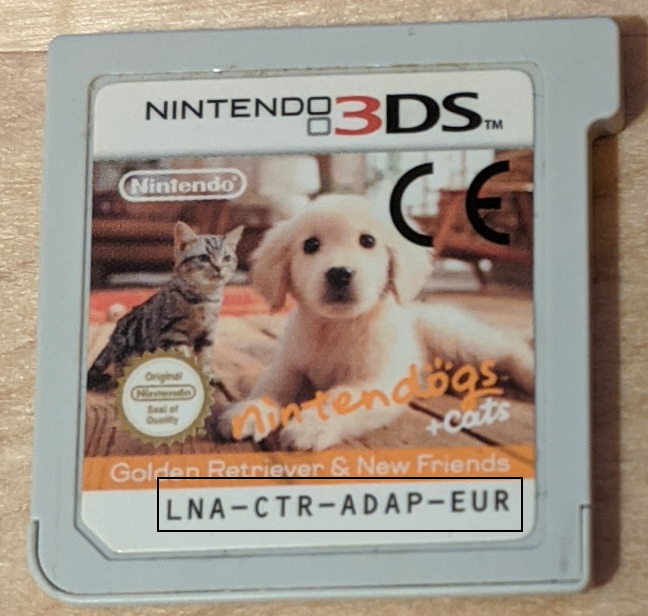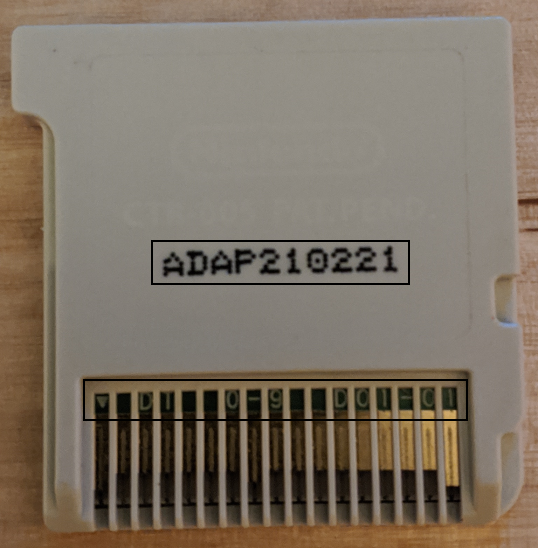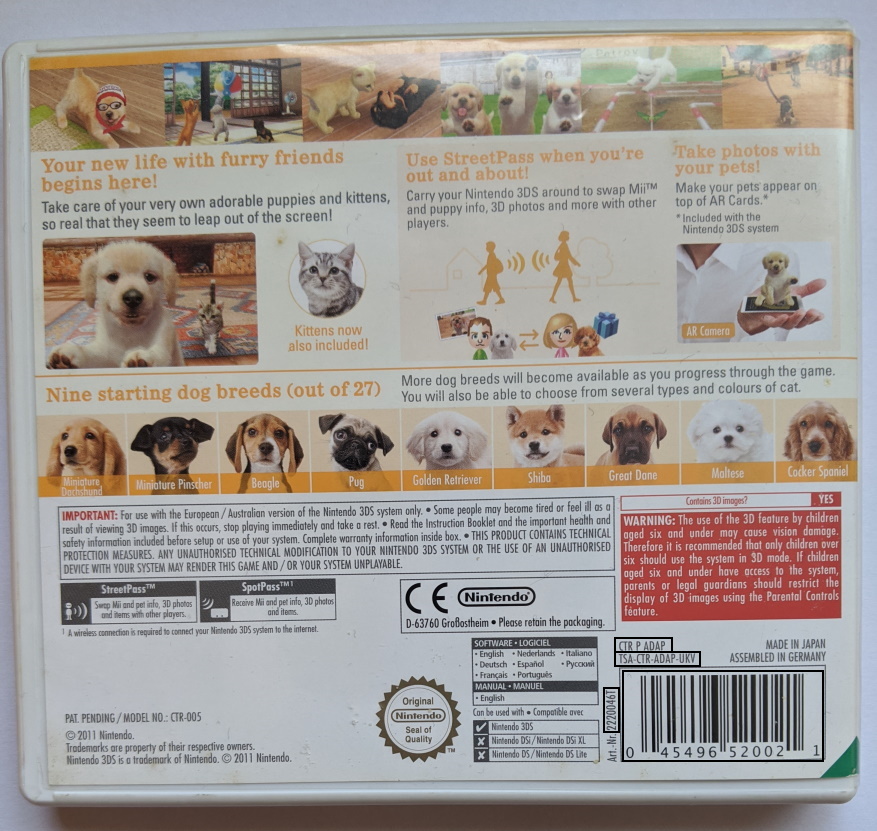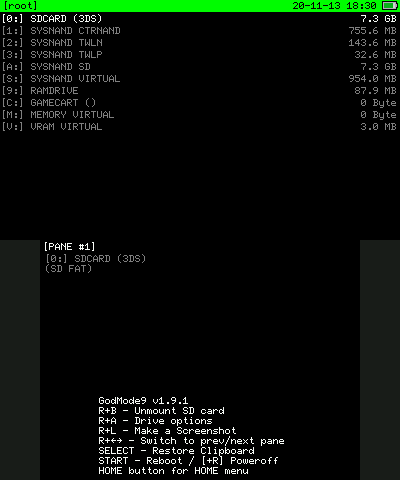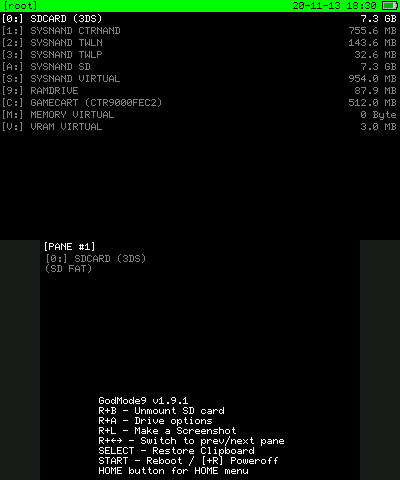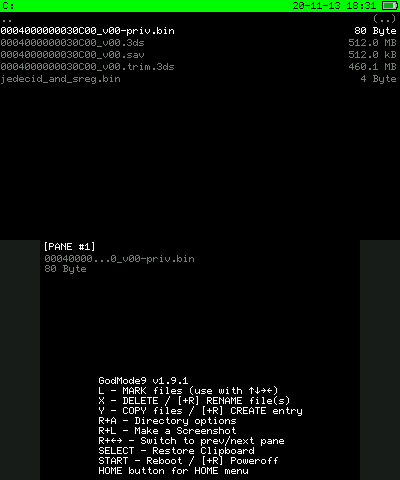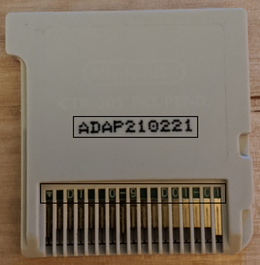This is an old revision of the document!
Nintendo 3DS
Check the dumping hardware overview for a list of known preservation hardware.
If you need help, please come chat with us on the VGPC or No-Intro discord servers.
Introduction
Important Notes
- Unopened games should have their ROM and save data dumped before attempting to play them. This avoids inadvertent modification of the data and helps preserve any possible rewritable data in its unused/“factory” state. This is especially important for types of cart that store the ROM on rewritable media, or games that come with special save data pre-installed. But it is not necessarily possible to know in advance, hence why its advisable to dump first. Note in your submission whether the physical media was sealed and include a photo of the cart/packaging in its sealed state, if possible.
- You should clean the physical media's electrical contacts before trying to dump it, then dump it, and if it doesn't match something in the database, clean it again and dump it a second time, checking if both dumps match using a file comparison tool or calculating the SHA256 of each file and comparing those values. This helps ensure that dirt on the contacts is not causing interference, and that dirt was fully removed during the cleaning process.
- Especially for rare items, make sure to keep the media and dumping hardware around as long as possible (and keep in contact with any future owner if possible), in case an issue with the dump comes up. At minimum (again, if possible) its good idea to keep it around for a while after its been added to the database.
Dumping Nintendo 3DS carts is fairly easy, and can either be done through homebrew software, or by using a DS flashcart.
You will need an SD card 8GB or larger for this.
Methods
3DS console (GodMode9)
This method works on all models of the 3DS, 2DS, and New 3DS handhelds.
Follow the 3DS Hacks Guide to enable running homebrew on your 3DS and install the latest stable version of GodMode9.
You do not necessarily need to install custom firmware to run GodMode9 - you can stop following the 3DS Hacks Guide once you get to the point of being able to run a .firm file (or equivalent file for that particular exploit). But for convenience, you may want to follow the 3DS Hacks Guide to the end, so you can easily run GodMode9 at boot.
Dumping
- Launch GodMode9 by pressing (Start) and then the power button
- Navigate to
[C:] GAMECART - Copy the .3ds file without trim in its name and the .txt file to the SD card. If split files show up (for 3DS games that are 4GB), copy the full 4GB file, and then append the last byte that's listed in the .txt file, using a hex editor.
Gallery
For Reference: Identifying Game Versions
TGGRMYVRRR
T = Type
GG = Game code (e.g. DA = nintendogs + cats: Golden Retriever & New Friends)
R = Region (J = Japan, E = USA, P = Europe)
M = Manufacturing month (numbers, then after Sep its X,Y,Z for Oct,Nov,Dec)
Y = Manufacturing year (2010 + value OR 2020 + value - you have to tell which from context)
V = Version (starts at 0)
R = Manufacturing run
Easy way to remember where the version number is: fourth character from the right - this works for DS/i carts too.
Checking the ROM (optional)
Download ctrtool and run
ctrtool --intype=cci --verify dump.3ds > ctrtool_log.txt
(replace dump.3ds with the name of your dump). This will create a file called ctrtool_log.txt, which you should keep alongside the dump.
Gathering and Submitting Dump Info
Once you've dumped your games, it's time to generate and submit metadata to a preservation project for validating and cataloging. See the dump submission instructions for more information.
Based on this No-Intro wiki page and Psykopat's back-of-cart serial research
